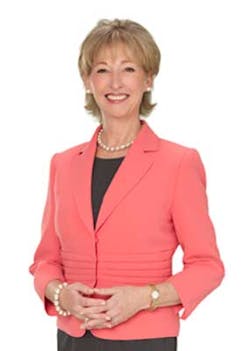Scheduling frustrations: A great dental team meeting topic
The schedule is the most complex and difficult job. A well-crafted schedule is a team event. What are some of the steps?
1. Analyze the doctor's average time per procedure.
2. Analyze the dental assistant's time to tear down, clean up, and set up an operatory. Measure the time it takes to take a digital FMX. This can realistically be five to six minutes with a cooperative patient.
3. Is the assistant prepared to assist with the procedure? Every time the assistant leaves during the procedure costs the patient and practice time and money (assuming the procedure didn't change).
ALSO BY DR. SAVAGE: "I just want to do dentistry!" Is your schedule causing you frustration?
4. Doctor, how is your attention to the schedule? Are you listening to your team and going to the operatory you've been directed to? Or are you in your office, on the phone, or on the computer? Do you fill out your own charts or do all the talking yourself? The ability to delegate the talking and charting allows you to produce more, stay on schedule, and decrease confusion at the front desk.
Chart note templates are helpful, whether you're electronic or still working with paper charts. We offer amazing templates that will save you 100 hours versus creating them on your own. Visit http://milesglobal.net/shop/training-materials/electronic-chart-note-templates/.
Doctors say, "Well, it only takes me two to three minutes per patient to write up my own charts." If you take 2.5 minutes per patient on average and you see 15 patients per day restoratively, that's 37.5 minutes per day. You've lost 120 hours of production a year, assuming a four day per week schedule. What's your production per hour?
5. Measure hygiene timeliness. Healthy and normal adult patients are typically a 50- to 60-minute appointment. Doctor, your exam time cannot be more than four to six minutes.
--------------------------------------------------
RELATED ARTICLES:
Cell phone use in the office
Winners aren’t whiners: Resolving negativity in the dental office
---------------------------------------------------
6.Measure the checkout process. How long does it take for the front desk to check out a patient? Is there a lot of social chit chat at the front desk? Are other patients kept waiting as a result, or does the phone go unanswered? Do the front desk team members have the information they need to check out the patient? The No. 1 frustration of the front desk is an incomplete chart. Your chart is your No. 1 communication tool. It needs to be at least 90% complete before the patient is walked to the front desk.
For a smooth pass off to the front desk: Doctor, don't touch the up button on the dental chair. What happens if you do? The patient will pop out of the chair, rip off the bib, and head to the front desk. Instead, semi-recline the patient and say, "Everything went very well today. I'm going to ask Sara to complete your clinical record and answer any questions you have. It was wonderful seeing you. Next time you come in, we need to take care of the crown on your upper right and the filling on your lower right. The tooth on your upper right is fragile. I'd like to see you in the next two to three weeks. Until then, be careful. Keep anything hard or crunchy to the other side. Thanks much for coming in." The doctor gracefully passes the 'baton' to the assistant, creates a sense of urgency (if appropriate), and summarizes what's next.
The dental assistant then says, "Please relax for a minute while I finish these notes, then we'll talk about today. Everything went great!" She talks with the patient and smoothly passes the patient off to the front desk. She doesn't linger up front and talk. I also recommend the assistant dismiss the patient. The doctor who dismisses a patient will have a tendency to talk at the front desk. This creates an awkward moment as the front desk is left waiting, and the patient is waiting, knowing he or she has to pay.
7. The check-in and checkout process is another topic. When patients walk through the door, they are NOT patients! They are customers. They become patients when they sit down in the dental chair.
Customers are impatient and demanding, and they have a higher level of expectation regarding customer service than they do when they're in patient mode. For every minute they wait for your hygiene exam or wait at the front desk due to an incomplete chart, you'll have correspondingly less case acceptance. The check out at the front desk must be efficient. If a patient has to wait for you to go to the back to get information, they’re likely to say, "I'll just give you a call" or "I need to check my schedule."
8. Value begins on the phone and in the back. Verbal skills are crucial. Value helps decrease broken appointments and last minute cancellations. Value is expressed prior to scheduling on the phone and before financial presentations.
To increase case acceptance, train your team, and develop the front desk, contact me at [email protected] for a complimentary 15- to 30-minute appointment to discuss ways to train your team. You can also check out the following DVDs — "Your Phones, a Joy or an Ouch," "Got Perio?" and "The Savage Front Desk" at www.MilesGlobal.net.
Efficiency, customer service, and friendliness are key components of a successful practice. Great internal marketing means you build the relationship, educate the patient (creating value), and stay on time. Take your practice to the next level by focusing on the needs, wants, and desires of your patients. I've never heard a patient say, "Geez, Doc, I wish you would've taken longer!"
Rhonda Savage, DDS, is CEO of Miles Global, an international dental training and consulting firm. Her speaking and publishing topics include women’s health issues, leadership, and business management. Her 35 years in dentistry include roles as a dental assistant, a front office staff member, and a private practice dentist. Dr. Savage knows the demands of quality patient care, leading a winning team, and running a successful business.
A Lieutenant Commander in the Navy during the years of Desert Shield and Desert Storm, Dr. Savage received the Navy Achievement Medal and an Expert Pistol Medal, earning her the nickname “The Beast.” Visit MilesGlobal.net for her training products, or email [email protected] regarding her speaking or consulting services.

